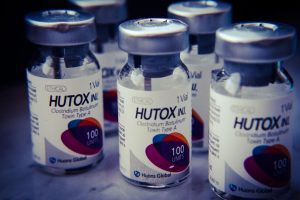
What Is Body Dismorphia?
Body dysmorphic disorder (BDD) is a mental health condition, which is characterized by the sufferer either having a distorted sense of self-image or an imagined defect or defects in their physical appearance.
Indeed when the disorder was first noticed among the medical profession it was termed ‘imagined ugliness syndrome’. Commonly associated with anxiety and eating disorders such as anorexia nervosa and bulimia, BDD can also manifest into how people use cosmetic procedures.
The term cosmetic procedures covers an enormous range from non-surgical to surgical interventions. All of which have the aim of altering and improving appearance.
The characteristics of BDD can make someone dissatisfied with the results of cosmetic procedures. This is because the procedures do not treat the underlying cause, which is a psychological rather than a physical problem. Therefore, sufferers can often opt for repeated procedures and surgeries in an addictive behavior pattern.
The following article provides an overview of BDD including causes, symptoms, and treatments. It also defines cosmetic procedures, explains some of the dangers of addiction, and looks at cosmetic professional responsibility when it comes to sufferers of BDD and cosmetic procedure addiction.
Who Can Have Body Dysmorphic Disorder?
Anybody can have BDD; women, men, adults, and children the world over. There is some evidence that suggests a small increase in cases in post-menopausal women. However, evidence shows it is increasingly common in teenagers and young adults with studies suggesting that over 70% of cases emerge in people under the age of 18.
In the majority of studies into BDD, women have been more likely to suffer from it. However, some studies, particularly those among younger adults and adolescents have suggested that it is becoming equally common in males and females or that its diagnosis has been previously skewed towrad women. Among males, the majority of those who experience BBD identify as gay or bisexual.
However, there are differences in the perceived flaws that men and women experiencing BDD have.
In males the flaws/body parts that are commonly obsessed over are:
- Height
- Genitals
- Hair thinning/receding hairline
- Body build
- Muscles (sometimes termed bigorexia)
- Excess body hair
In females the following body parts are the more common areas of preoccupation:
- Face
- Breasts
- Facial and body hair
- Bodyweight
- Nose
- Skin
- Hair
- Lips
- Hips
- Legs
What Causes BDD?
Some factors predispose people to a likelihood of suffering from BDD these include dysfunctional or abusive backgrounds and people who experienced bullying as children or young adults.
This is thought among medical professionals to be because these situations and experiences can lead to insecurities, inferiority, low self-esteem, and poor self-image.

Genetic predisposition may also be a risk factor for BDD with those who have family members with BDD or similar anxiety issues such as depression or Obsessive Compulsive Disorder (OCD).
BDD, Cosmetic Procedure Addiction And The Media
Many recent studies have noted the increase in BDD and cited the increasing use of social media and excess screen time as a leading cause, particularly among adolescents.
It is known that extended, or excessive use of social media negatively affects mood and self-body-image. And it has been known for some time that exposure to doctored media images can skew perceived notions of physical attractiveness leading to an increase in BDD and related illnesses such as anorexia nervosa.
This is because filtered, photoshopped, or otherwise manipulated images are commonplace. This alters the idea of what is ideal or even normal. Recent incidents of young adults seeking cosmetic surgical consultations where they expressed a desire to look like their filtered images on the popular social media app Snapchat have been termed by some as ‘Snapchat dysmorphia’.
The emergence of the ‘selfie’ as such a common means of expression, communication, and the ability to alter or ‘improve’ such images can lead to dissatisfaction when then faced with their ‘real’ life image without filters.
There is also increasing importance placed on celebrities and even the idea of what constitutes being a celebrity has changed dramatically alongside the rising popularity of social media with an ever-increasing focus on looks and perceived attractiveness.
Celebrities themselves are not immune to these problems and indeed many of us have seen celebrities suffer from BDD and addiction to cosmetic surgery in front of our very eyes. Sadly this is often portrayed with the gravitas it deserves nor are the sufferers offered the sympathy they deserve, instead of being ridiculed or criticized.
Many professionals and groups are now stressing the importance of teaching young people, parents, and schools about the dangers of excessive use of social media and screen time and about educating young people about the way images in the media are manipulated.
How Many People Have Body Dysmorphic Disorder?
It is widely understood that BDD is often unrecognized, unreported, and underdiagnosed. This, together with differences in criteria adopted by various studies mean that accurate numbers of people with BDD are hard to gauge. In the USA the numbers of people thought to have BDD range from 1% of the population to 5.8%.
When instead of looking at the entire adult population and instead looking at dermatology patients the figure is higher at 6.7%. For cosmetic dermatology patients, the number leaps again to 14%, and among potential rhinoplasty (nose reshaping) patients it is as high as 21%.
What Are The Symptoms of Body Dysmorphic Disorder

People with BDD may show some of the following symptoms.
- Looks in mirrors a lot (or avoids looking in mirrors at all).
- Spends a lot of time comparing appearance with that of others.
- Worries about appearance and particular parts of appearance/perceived flaws.
- Spends a lot of time ‘camouflaging’ or trying to conceal perceived flaws i.e. grooming, applying makeup, choosing, changing, and arranging clothes and accessories, styling and combing hair.
- Feels unattractive, ugly, disgusting, or repulsive.
- Avoids social situations, being looked at or photographed.
- Does not believe or even seem to hear reassurances about perceived flaws.
- Picks at the skin.
- Seeks unnecessary, repeated cosmetic procedures and/or surgery
- Dissatisfaction with cosmetic procedures and/or surgery and antagonism, abnormal or demanding behavior towards the staff/surgeon.
What Are The Impacts of Body Dysmorphic Disorder
The impact that BDD has on sufferers on their quality of life can be immense. The illness is associated with an increased suicide rate, depression, social anxiety, relationship difficulties, depression, work problems including absenteeism and unemployment, alcohol and substance abuse, and other risky behaviors including attempting DIY cosmetic procedures.
What Are Some Related Conditions To BDD?
Co-morbidity is when two diseases or medical conditions coexist in a patient. As aforementioned, people who suffer from body dysmorphic disorder often have other mental health issues at the same time. These most often include:
- Anorexia Nervosa (more common in women)
- OCD (Obsessive-compulsive disorder)
- Bulimia (more common in women)
- Alcohol/substance misuse (more common in men)
- Social anxiety disorder
- Depression
- Personality disorders
Treatments for Body Dysmorphic Disorder
It is important for those who experience BDD to seek help from a medical professional and to know that it is something that many people suffer from, that it is nothing to be ashamed of, and most importantly that it can be treated.
BDD is often treated with either medication called selective serotonin reuptake inhibitors (SSRI) or cognitive behavior therapy (CBT) or a combination of both.
Selective serotonin reuptake inhibitors are a type of antidepressant.
CBT is a form of therapy that will help you to manage your symptoms by talking about and understanding triggers, dealing with difficult situations, and gradually learning how to change the way you think and behave.
People who have BDD may also find that joining a support group specifically for BDD may help.
If the combination of CBT and SSRIs is ineffective after a period of around 3 months then a doctor may suggest a different kind of antidepressant medication and/or further assessment with a BDD specialist professional or treatment center.
People who are suffering from BDD and are not receiving professional help and advice may be likely to think that a cosmetic procedure/s will help to solve their problems. This is most likely not the case, as the procedures do not solve the underlying problem which is psychological rather than physical.
Studies have shown that often instead of the patient being satisfied following cosmetic procedures and surgeries, their symptoms, the imagined flaw, anxiety, and depression become worse afterward. This can lead to the patient opting for more and more procedures and surgeries. It can, in other words, lead to an addiction to cosmetic procedures.
What are Cosmetic Procedures?
Cosmetic procedures fall under two categories; non-surgical and surgical procedures.
Non-Surgical Cosmetic Procedures Include:
- Dermal fillers
- Botox injections
- Hair removal
- Permanent Makeup
- Chemical Peels
- Microdermabrasion

Surgical Cosmetic Procedures Include:
- Rhinoplasty (nose reshaping)
- Surgical fat transfer
- Liposuction
- Breast augmentation
- Hair transplantation
- Rhytidectomy (facelift)
- Abdominoplasty (tummy tuck)
- Blepharoplasty (eyelid surgery)
- Ear correction

How Many People Have Cosmetic Procedures?
Cosmetic procedures are increasingly common.
The USA is the country with the highest number of cosmetic procedures in the world. Between 2015 and 2019 the number of people in the US who had liposuction increased by nearly 25,000. Over the same period the number of people who had microdermabrasion increased by over 70%. The amount of all cosmetic procedures both surgical and nonsurgical has risen from about 1.6 million in 1997 to over 4.8 million in 2018.
The UK has seen a 300% increase in the number of people having cosmetic procedures.
Worldwide the number of people undergoing cosmetic procedures has similarly risen. With around 20 million in 2014 and over 23 million in 2018.
What Is An Addiction To Cosmetic Procedures
Undergoing cosmetic procedures is, of course, a matter of individual choice and many people are happy with the results. They may choose to have just one procedure or many. However, when having these procedures begins to impact negatively on people’s lives then it can cross over into addiction.
Addiction to cosmetic procedures is a behavioral addiction, although in some cases people who undergo repeated procedures become addicted to the pain relief medication (often opioids) prescribed following surgeries. This addiction to pain relief medication then becomes a reason for repeated procedures.
Cosmetic procedure addiction is far more common among people who have BDD, and some argue that people with this addiction all have some degree of BDD.
For some people, the addiction takes the form of wanting to look just like a particular celebrity or even a fictional character; such as Barbie.
The effects of addiction to cosmetic procedures are myriad and are listed below. Included in the following are the risks that are present for any cosmetic procedure but that are increased as a result of multiple procedures.
- Nerve damage
- Necrosis
- Anesthesia-related complications
- Excessive Bleeding
- Financial problems
- Scarring
- Blood clots
- Death
- Permanent muscle damage
- Permanent skin damage
- Pain relief medication addiction/Opioid addiction
- If refused surgery addicts may seek unqualified practitioners or attempt DIY surgery
Even repeated non-invasive cosmetic procedures carry the risk of permanent long-term damage. In the case of long term or repeated Botox (Botulism toxin) treatments some of the side effects can include:
- Weakening of skin
- Weakening of facial muscles
- Spread of the botulism toxin throughout the body
- Eye irritation
- Vision loss
- Allergic reactions
Cosmetic Professionals and Plastic Surgeons Responsibility
To give informed consent to any procedure whether it is surgical or non-surgical a patient must be deemed competent. A patient having Body dysmorphic disorder does not necessarily mean that they are not competent to give consent. However, having BDD may mean that the patient has unrealistic expectations of the results of a cosmetic procedure, or may not ‘see’ the positive results of a procedure.
Among professionals in the field of cosmetic procedures, surgery, and medicine over 65% consider that a patient having BDD is a contraindication for any procedure. The reason given by many simply because the patient would be far more likely to not be satisfied with the outcome as it is a psychological rather than a physical problem, rather than due to issues of consent. However, this leaves a significant proportion who don’t. In fact, there have been arguments as to whether cosmetic procedures can, in some cases, help people who have BDD. If the procedure can correct a flaw then for some that is a positive outcome.
However, the majority of people with BDD do not have just one flaw that they are obsessive about. Research suggests that most often, there are 3 or 4, body parts or aspects of a person’s physical appearance which are the focus of their BDD. This suggests that a person with BDD would be looking to undergo more than one procedure. This leads to an increased likelihood of the procedure not having the desired effect, and multiple procedures are known to have an increased risk of complications.
The majority of cosmetic professionals reported that they would contact a patient’s physician or therapist if they had doubts about whether they had BDD.
It is of paramount importance that cosmetic professionals do this not only to ensure that they are not performing procedures or surgery on people who, due to a mental health problem are not able to give active consent as, due to the nature of the illness, but they also do not fully understand that the procedure will, in many cases, not help them.
It is also important that the cosmetic professionals contact the patient’s therapist or doctor to protect themselves. Since 2001, three plastic surgeons have reportedly been murdered by patients with BDD, and many more report altercations and/or threatening behavior.
References:
Enander J, Ivanov VZ, Mataix-Cols D, Kuja-Halkola R, Ljótsson B, Lundström S, Pérez-Vigil A, Monzani B, Lichtenstein P, Rück C. Prevalence and heritability of body dysmorphic symptoms in adolescents and young adults: a population-based nationwide twin study. Psychol Med. 2018 Dec;48(16):2740-2747. doi: 10.1017/S0033291718000375. Epub 2018 Feb 28. PMID: 29486813; PMCID: PMC6236441.
Gunstad J, Phillips KA. Axis I comorbidity in body dysmorphic disorder. Compr Psychiatry. 2003;44(4):270-276. doi:10.1016/S0010-440X(03)00088-9
Higgins S, Wysong A. Cosmetic Surgery and Body Dysmorphic Disorder – An Update. Int J Womens Dermatol. 2017;4(1):43-48. Published 2017 Nov 20. doi:10.1016/j.ijwd.2017.09.007
Himanshu, Kaur A, Kaur A, Singla G. Rising dysmorphia among adolescents : A cause for concern. J Family Med Prim Care. 2020;9(2):567-570. Published 2020 Feb 28. doi:10.4103/jfmpc.jfmpc_738_19
Klein AW: Contraindications and complications with the use of botulinum toxin. Clin Dermatol 2004;22:66-75.

